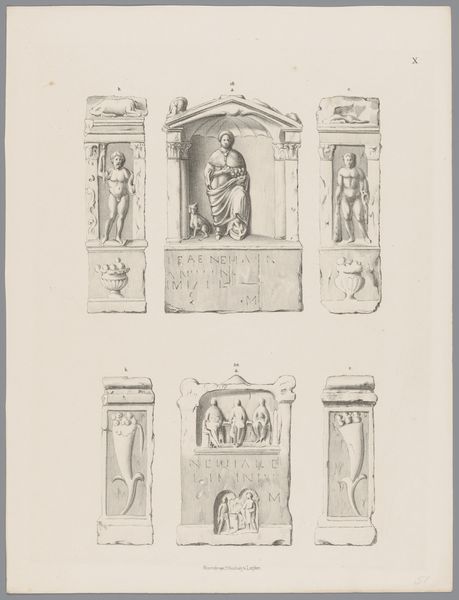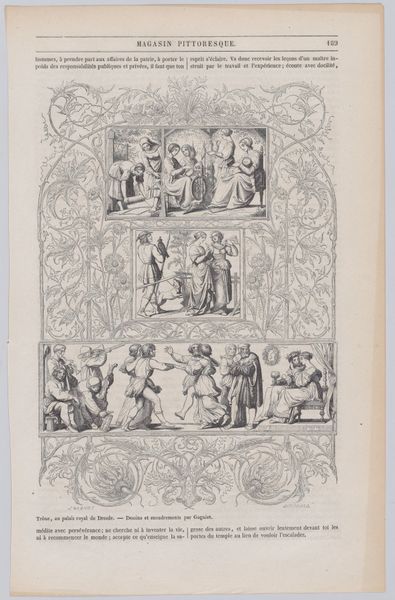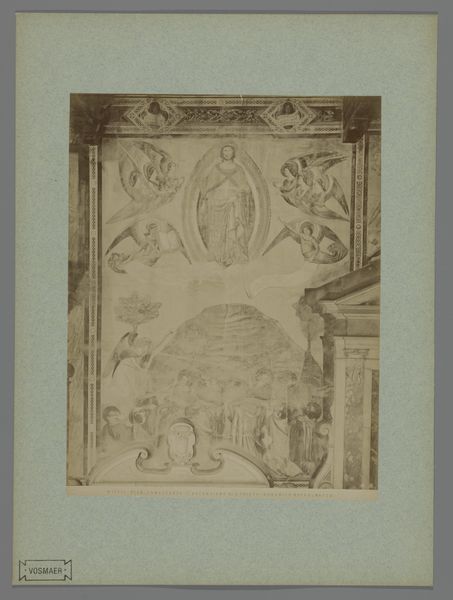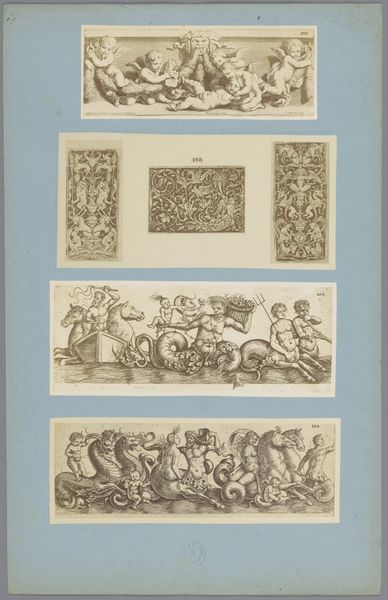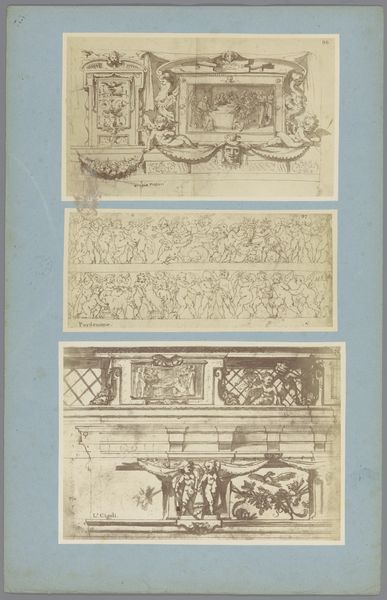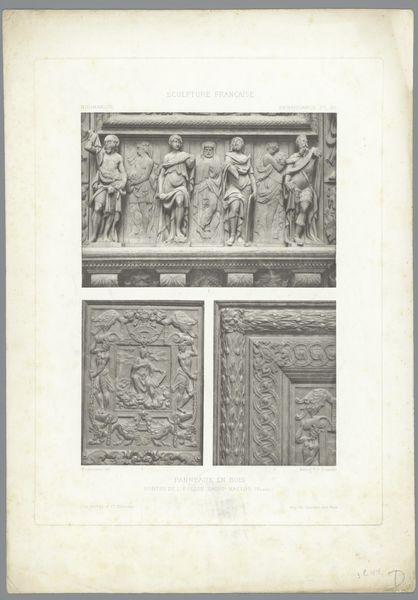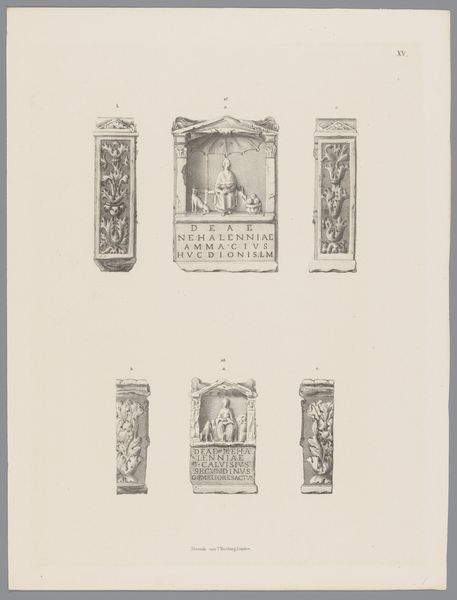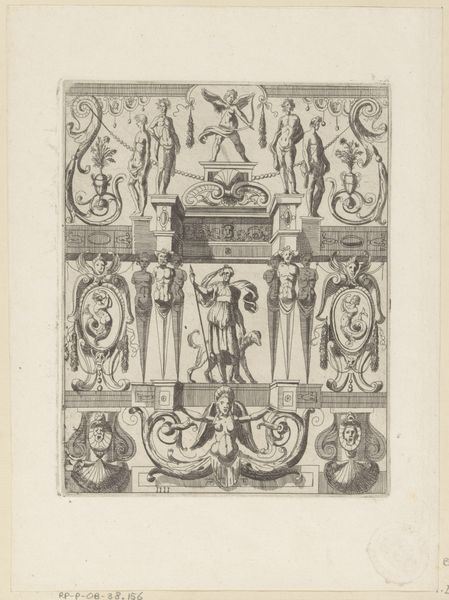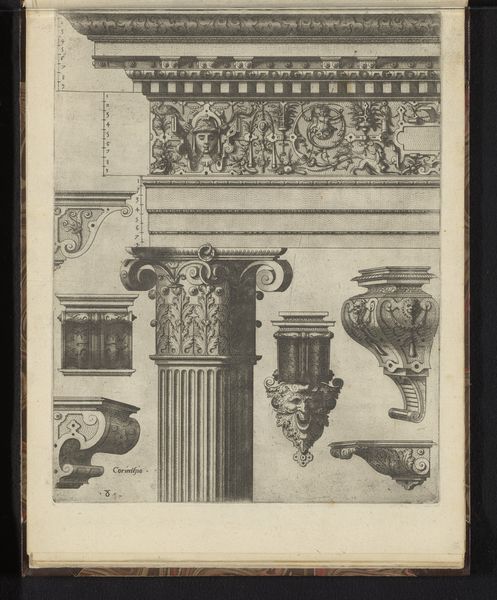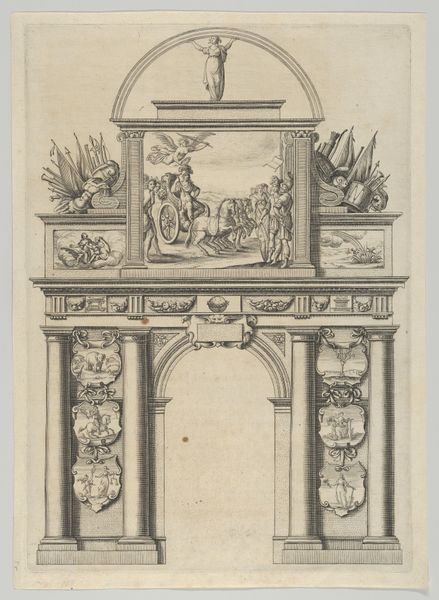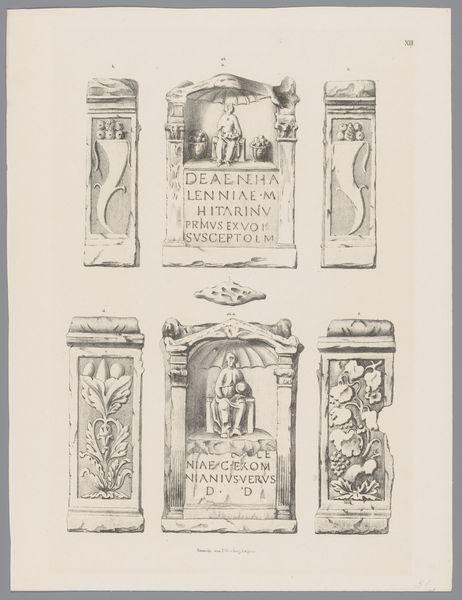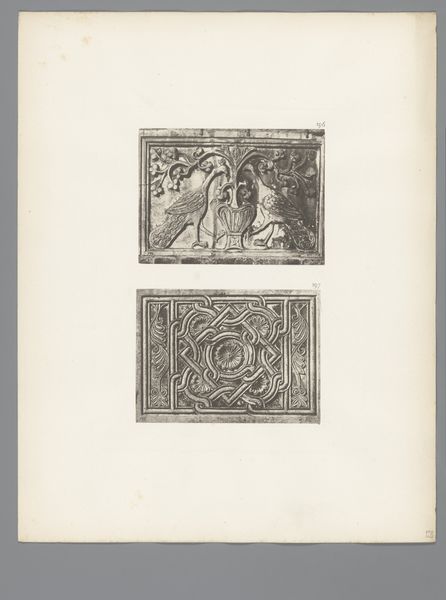
Drie fotoreproducties van prenten en een tekening van architecturale elementen c. 1875 - 1900
0:00
0:00
drawing, print, paper, ink, architecture
#
drawing
#
ink paper printed
# print
#
classical-realism
#
paper
#
ink
#
geometric
#
academic-art
#
architecture
Dimensions: height 496 mm, width 318 mm
Copyright: Rijks Museum: Open Domain
Curator: These are photographic reproductions of prints and a drawing showcasing architectural elements. The sheet dates from roughly 1875 to 1900 and, intriguingly, the artist remains anonymous. Editor: Immediately, the precision and repetition strike me. It’s like a neoclassical pattern book, meticulously documenting every scroll and capital. The columns, especially, they possess a distinct weight of tradition. Curator: Absolutely. Consider the context. Academic art of this era focused intensely on the faithful reproduction and study of classical forms. Architecture was viewed as a pillar of civic virtue, these drawings offered examples. Editor: I see in these architectural flourishes so much more than just decoration. They embody the Roman ideal: authority, order, permanence. A building isn't just shelter. The cornucopia motifs promise bounty; each carefully placed volute speaks to the legacy of a vast empire. Curator: Precisely! This kind of imagery reinforced societal hierarchies. Displaying such meticulous rendering of classical elements demonstrated not only artistic skill, but also one’s connection to that inherited authority. They offered a very literal blueprint for constructing—and perpetuating—power. Editor: I'm interested in the cross-cultural application and manipulation of classic forms through the centuries. We build our identity, one visual reference on another. The dragon intertwined with the acanthus leaves seems very symbolic in that light. Curator: A compelling point! It prompts consideration of evolving values and cultural blending reflected in the enduring symbols and their adaptations. The museum acquiring these reflects their enduring utility and interpretation. Editor: Studying the evolution and appropriation of these archetypes gives so much to those of us looking into inherited narratives. Curator: For me it highlights how power manifests visibly over time, and how artists and institutions are always implicated in those processes.
Comments
No comments
Be the first to comment and join the conversation on the ultimate creative platform.
